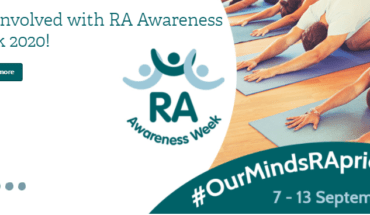Have you ever wondered what makes rabies so newsworthy? What makes rabies a serious infection? How does it affect our bodies? What countermeasures need to be taken if you suspect you’ve been infected. World Rabies Day is 28th September 2017. #WorldRabiesDay
Transcript
What is rabies? Is it exactly like what we see in the movies? In short the answer is no, not exactly.
It is transmitted to humans through accidental animal bites or scratches. It is a devastating degenerative infection that will inevitably get worse over time however you can use your mind as we do have preventive medical methods that work very well with administered in time.
Llet’s begin by having a look at the makeup of the rabies virus. Viruses are made up of RNA just like you and I have DNA RNA is the viruses instruction manual for proteins that it has to make in order to survive inside of ourselves. These proteins help the rabies virus spread even further and hijack more cells. When you think about the small and simple structure of the rabies virus it is remarkable that it can exert the aggressive and grueling symptoms that we see in rabies.
So how exactly does rabies spread between people and animals well the rabies virus is mainly transmitted through saliva of infected animals such as dogs, raccoons and bats. When the infected animal bites another animal or human the rabies virus enters the body through the wound. The period before the rabies virus spreads to the peripheral nerves is called the incubation period which may last for weeks. During this phase no symptoms manifests since the virus localized to the site of injury.
As the virus moves throughout the body it replicates invisible symptoms begin to appear. Some of the symptoms in humans include physical pain fatigue fever and agitation.
Although the rabies virus affects many parts of the body its major target is the nervous system. The nervous system is made up of the central nervous system which includes the brain in the spinal cord and the peripheral nervous system which includes all of the other nerves in the body. The replicating rabies virus first invades the peripheral nervous system where it travels through neurons until it reaches the central nervous system. After reaching the central nervous system the virus travels up the spinal cord and into the brain where it rapidly multiplies. The brain is where the virus exerts is detrimental neurobiological effect.
Tthe major effect of the rabies virus on the brain involves inflammation to put that into sciency terms it’s called encephalitis. Encephalon means brain and itis means inflammation, so how does this present in people infected with rabies.
Tthe brain is the main command center for our entire body, it controls important functions such as digestion breathing speaking and emotions. When rabies takes over the emotional control areas the patient may feel aggression and anger erratically. Using methods such as magnetic resonance imaging or MRI which can scan your brain activity researchers can identify the specific brain regions that are affected once a person acquires the rabies infection.
Ccurrent research has shown that brain areas such as the brainstem. hypothalamus and pituitary gland may be most affected by rabies infections. This may explain the aggressive behavior found in rabies but again keep in mind that this information is not fully understood. Although rabies and fashion’s can generally be fatal if patients seek medical help immediately upon being bitten by a rabid animal the chances of survival increases to a hundred percent. Since the inoculation phase happens before the spread of rabies to the nervous system there is enough time for a vaccination to boost the immune response to the virus preventing it from spreading by killing the virus.
Tthe post-exposure treatment involves a shot contain immunoglobulins against the rabies virus and a series of vaccinations over the next two weeks. These vaccines can be administered both to animals and humans to reduce the spread of viral infection. Workers and rabies prone environments are recommended to vaccinate themselves regularly such as zookeepers and vets.
Hopefully you now understand what the rabies virus is, how it acts on the nervous system to cause its symptoms and how vaccines can be used to prevent it. Although rabies is a frightening disease we do have countermeasures to prevent it so remember always seek immediate medical help when you get bitten by an animal.
- Broken-heart syndrome patients increased risk - 25th March 2025
- Effective digital healthcare depends on trust - 24th March 2025
- Natural fats in human skin link to eczema - 24th March 2025





